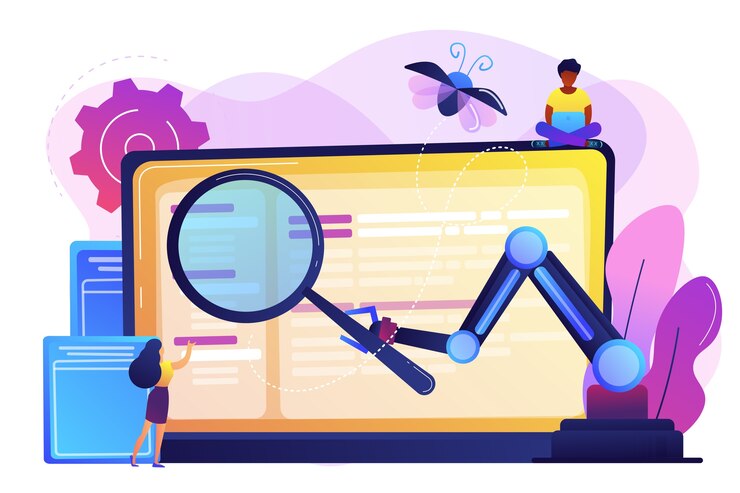Crawlability is the foundation of your website’s search engine optimization. It is the manner in which search engines such as Google find out and comprehend your web pages. Good crawlability enables a website to be easily understood and ranked by search engines hence making it possible for them to list your information on their databases. Here is a breakdown of the things that one must do so as to enhance crawlability in their websites
Understanding Crawlability
Before we get into optimization, let’s first understand what crawlability is. Crawlability is the term used to determine how well search engine bots (known as spiders or crawlers) can reach and explore your website. Visualize them as dedicated librarians that sit and catalogue all sorts of information. By having a website that is well-organized and the layout easy to navigate, they can do this job more efficiently.
Step-by-Step Guide to Improving Crawlability
Design A Logical Site Architecture
- Sensible URL Structure: Every page of your site should have logical and descriptive URLs that can easily echo the contents of each. For example, instead of “product123. html,” simply change it to say “best-running-shoes. html.”
- Internal Linking: Create a strong internal linking structure to help search engines navigate through your website. Utilise those keywords by linking relevant pages, forming a logical page hierarchy.
- Navigation: Have a good and clear navigation menu on your site. Users and search engines should be easily navigated.
Optimize Your XML Sitemap
- Produce an XML Sitemap: Generate a sitemap that points out all essential web pages on your site. This makes it easier for the search engine to find your content.
- Send to Search Consoles: To let search engines know about the structure of your website, send your XML sitemap to Google Search Console and other relevant search engines.
Fix Broken Links
- Regular Audits: Perform audits of the website on a regular basis so that you can locate and then repair any broken links. Such links tend to lead to poor experiences by users and reduce understanding among search engines.
- Redirect Broken Links: For the sake of preserving link equity and avoiding wastage of crawl budget, always use the 301 redirects every time you find a broken link that points to some other page elsewhere.
Manage Robots.txt
Your robots.txt file tells search engine bots which pages to crawl and which to avoid. It is crucial to have this file correctly set up for better crawlability with the search engines.
Best Practices
- Permit Essential Pages: Make sure that your homepage, category pages and prominent landing pages are not restricted.
- Block Irrelevant Pages: You can block the pages you do not wish search engines to index, like admin pages or duplicate content.
- Test Your Robots.txt: Try Google Search Console to test your robots.txt and see if it works properly.
Improve Website Speed
- Image optimization: If done properly, the images will be compressed so that they load quickly in the pages.
- Reduced HTTP requests: The number of HTTP requests is minimized by merging CSS and JavaScript files.
- Use browser caching: Store static files locally with browser caching to reduce load times.
- Make use of a content delivery network (CDN): By delivering content closer to your users, CDNs can help your site load faster.
Mobile Optimization
- Responsive Web Design: Make Sure Your Website Is Also Optimized For Mobile Users, And That It Adjusts To Different Size Displays
- Accelerate Mobile Load Time: Make your website responsive for quick load times on mobile.
Monitor Your Website
- Leverage Search Console: Always keep an eye on google search console for crawl errors and other technical issues.
- Deal with Problems Right Away: The earlier you fix the crawlability problems, the better it is so that it does not affect your rankings in a negative way.
- Scheduled Audits: Conduct Timely audits with technical SEO services or any other tool to help catch new crawlability errors.
- Update Content Often: Refresh your content frequently to keep it relevant for users and search engines alike.
Why Technical SEO Services are key
Several of these can be done in-house, but technical SEO is fairly complex. If you do not have the expertise or resources, proceed to hire professional technical SEO services. These services (an example being AO Creatives), can improve on your website’s performance with ease. These improvements include comprehensive audits, fixing issues and implementing various optimizations to maximize your website’s overall performance.
Conclusion
By following these steps and fixing any underlying technical challenges, you can enhance your site crawlability considerably, likely leading to effectiveness in ranking better on SERP outcomes. Keep in mind that this is a never-ending process of crawlability, so regular inspection and action are extremely important for future growth. This will improve your technical SEO work and increase search visibility of the site.
If you want to guarantee improvement in your SEO, consider employing the help of AO Creatives. We’re great at what we do and provide maximum support and customer satisfaction. So what’re you waiting for? Contact us now and get started on your journey to online success!

